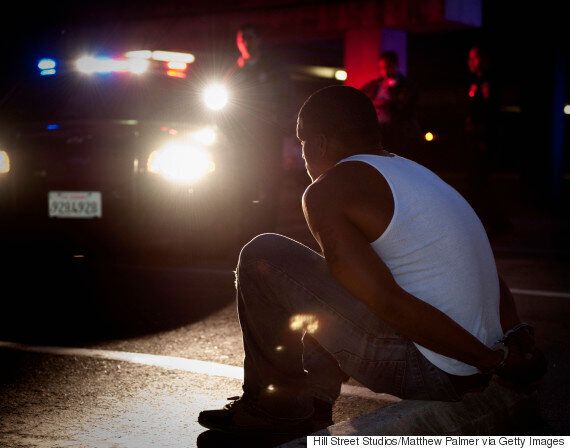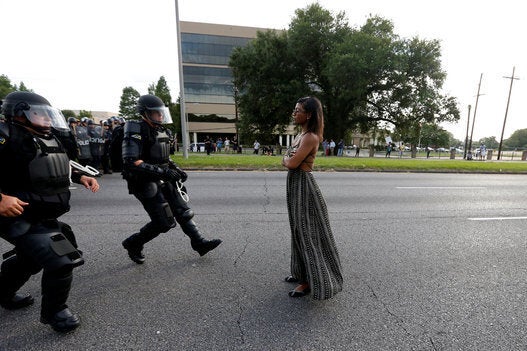In October of 1966, the Black Panther Party announced their official platform. One of their key demands was to put an end to police brutality and the killing of black people by police.
Sound familiar?
Half a century later, the Black Lives Matter movement is echoing this call, ensuring our collective eyes remain focused on the pervasiveness of anti-black racism among police in the U.S. And for good reason! Jordan Edwards, a high-school freshman in Texas, is the latest victim of police shootings, and communities have once more erupted in protest, demanding both justice for Jordan and solutions to this systemic problem.
Proposals targeted directly at changing the structure and culture of policing include better sensitivity training, police education, demilitarization, mandatory bodycams, policies to restrict the use of force and new systems of accountability with punishments that exceed the proverbial slap on the wrist that is desk duty. Such educational and institutional interventions are crucial to addressing police racism, but in and of themselves, are limited: they assume that racism exists only at the level of ideas and ideologies, which can be eliminated with targeted policies or rational arguments. To tackle this issue, we must also address a manifestation of racism that has remained largely absent from public debate: the embodiment of racism -- racist feelings.
Racist feelings are an extension of implicit racial biases, the (generally negative) set of unconscious stereotypes, attitudes and judgments we hold of others that powerfully influence our behaviour. However, where implicit racial biases exist at the psychological level, racist feelings are woven into the fabric of our bodies through sensation and affect.

They are the clenched jaw, the racing heartbeat and the rapid breathing experienced during encounters with racialized others. They are the discomfort, fear, anxiety, suspicion and disgust, and the simultaneous felt sense of power, superiority and/or entitlement that emerge in the presence of black bodies. This deep-seated prejudice lies outside the boundaries of rational logic, which helps to explain its tenacity despite the many social justice movements and educational campaigns that have sought to eliminate it.
Most people experience these feelings to some degree, but for police, vested with the state-sanctioned right to use lethal force, racist feelings are particularly dangerous. In altercations with African Americans, this reactive, visceral form of racism can override conscious thought and cause some police to feel a heightened sense of threat, even when, objectively speaking, no such threat exists. And in situations where there is little time (willingness?) to gather information before taking action, police rely on these gut responses to guide their behaviour. The result is the senseless loss of life that the black community experiences time and time again.

So, where do racist feelings come from? Although we commonly think of our emotions and physiological responses as natural, social science research suggests that our visceral responses are shaped by the social and political climate of the society in which we live. Racist feelings are no exception.
Throughout U.S. history, white Americans have bestowed upon themselves the "natural authority" to control black bodies. Based on colonialist ideals and the decrees of backward science, African Americans were deemed uncivilized, less intelligent, hypersexual and dangerous. This positioned the black population as inferior and criminal, and justified legalized forms of oppression, such as slavery and the segregationist laws of the Jim Crow era.
Is it any wonder that police seem to interpret any gesturing on the part of black men as threatening, and feel entitled to shoot?
These historic institutions imbued black bodies with negative meanings that provoke and condition certain embodied reactions: chiefly, a sense of danger and threat when in the presence of black others that is experienced as, for example, tense muscles, an increase in body temperature and/or a sense of dis-ease in the gut.
The constructed meanings of blackness, and the resulting embodied responses to them, have remained remarkably consistent over time. Today, they are thoroughly embedded in American culture. Media relentlessly reinforce those same negative characteristics in news broadcasts, television and film.
Moreover, although we no longer have laws that are explicitly designed to oppress or segregate, every part of the U.S. justice system disproportionately targets and punishes African Americans, creating the impression that black people form a criminal class that must be controlled. Is it any wonder that police seem to interpret any gesturing on the part of black men as threatening, and feel entitled to shoot?

I do not intend to excuse police brutality. Nor do I wish to imply that police are passive victims of their culture. My goal of is to uncover a layer of this issue that requires a different type of intervention than has been proposed thus far.
In addition to promoting anti-racist discourse and institutional reform, we must seek ways of developing anti-racist ways of feeling. The harmful sense of threat, discomfort or hatred felt during interactions with racialized others is deeply ingrained and may persist long after the myths and false beliefs of implicit racial bias have been dispelled. Sensitivity training can help change one's perspective. What we need is a program that changes one's perceptions.
We truly cannot afford is to witness the passing of another 50 years with the demand to end police brutality still unmet.
I propose adding ongoing mandatory police counseling to the list of demands and interventions that Black Lives Matter and other social justice groups have so well articulated. Counseling that uses a holistic approach -- addressing mind, body and culture -- has shown promising results with men's groups as a technique for abuse intervention.
With mandatory police counseling, we could effectively transform the structures of oppression that lie beyond conscious awareness but play a powerful role in motivating aggressive behaviour. Yes -- this kind of intervention is resource intensive: it is both expensive and time-consuming. However, it would be a more than worthwhile investment, for what we truly cannot afford is to witness the passing of another 50 years with the demand to end police brutality still unmet.
Follow HuffPost Canada Blogs on Facebook
Also on HuffPost:
